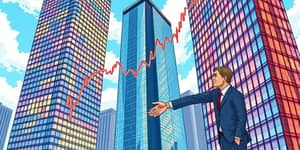
In recent years, sustainable investing has moved from niche to mainstream, attracting global attention and capital. The remarkable performance of ESG funds in 2023 has challenged long-held beliefs about the trade-off between environmental responsibility and financial returns. Investors now face a pivotal moment: how to integrate sustainability into their portfolios while navigating shifting market landscapes and policy changes.
By analyzing the latest performance data, market trends, and emerging themes, this article provides a comprehensive guide for investors seeking to capitalize on opportunities in sustainable finance. We explore the causes behind record flows and outflows, highlight key thematic drivers, and offer practical strategies for aligning investments with long-term resilience and impact.
The year 2023 was a watershed moment for ESG and sustainable funds. Across major asset classes and regions, these vehicles delivered superior returns compared to their traditional counterparts. According to recent statistics, the median returns for sustainable funds reached an impressive 12.6%, significantly surpassing the 8.6% achieved by conventional funds. This outperformance underscores a growing recognition that companies with robust environmental, social, and governance practices can be better positioned for long-term success.
Over a five-year period, a hypothetical $100 investment in a sustainable fund tracking these median returns would have grown to $135, versus $125 in a traditional fund. This 10-percentage-point differential highlights the compounding benefits of sustainable strategies and reinforces the view that ESG integration may enhance risk-adjusted returns over time. Moreover, global assets under management in sustainable funds climbed by 15% year-over-year to reach $3.4 trillion, representing 7.2% of total fund assets worldwide.
Despite the strong performance of 2023, the first quarter of 2025 brought unexpected challenges. Sustainable funds experienced a record net outflow of $8.6 billion, reversing the robust inflows seen in the final quarter of 2024. In Europe, ESG vehicles saw $1.2 billion in net redemptions—their first outflow since at least 2018—while U.S. funds recorded $6.1 billion in withdrawals.
Even amid these outflows, total sustainable fund assets remained elevated at $3.16 trillion as of March 2025. The pullback reflects a combination of market volatility, sector-specific performance dips—particularly in early 2025 for clean energy stocks—and heightened regulatory uncertainty. As policymakers across regions reassess ESG frameworks, managers and investors must adopt agile approaches to stay ahead of evolving requirements and investor expectations.
Fund managers and allocators are increasingly aligning capital with thematic drivers that address critical global challenges. The following areas are garnering the most attention:
Despite recent outflows, investor confidence in the long-term prospects of sustainable strategies remains resilient. A survey of U.S. investment professionals found that 73% expect the sustainable investment market to grow significantly over the next one to two years. Many cite continued alignment with the UN Sustainable Development Goals, particularly SDG 7 (Affordable Clean Energy) and SDG 13 (Climate Action), as key drivers for future inflows.
Impact investing and sustainability-themed funds are also rising in priority. Currently, 36% of respondents rank these approaches among their top strategies. This shift reflects a broader recognition that meaningful social and environmental outcomes can coexist with competitive financial returns, especially as data quality and measurement frameworks continue to improve.
As the regulatory landscape evolves, fund managers are adapting their methodologies. In Europe, 2025 is a critical year for compliance with stricter ESG rules, while U.S. policy shifts introduce both challenges and opportunities. Against this backdrop, there is a growing emphasis on transparency, data quality, AI-driven analytics, and harmonization of reporting standards to build investor trust and streamline due diligence.
Private markets are also experiencing a surge of ESG-focused activity. Sustainable bond issuance is expected to benefit from lower interest rates, while private equity and thematic debt instruments—covering biodiversity, circular economy, and social infrastructure—are attracting new capital pools. These developments underscore a broader trend: the convergence of financial innovation and sustainable purpose.
Despite the optimism, multiple headwinds could temper growth in the sustainable fund sector. Performance concerns persist in certain high-profile industries, leading some investors to question the resilience of ESG strategies during market downturns. Moreover, the threat of greenwashing and political pushback has intensified scrutiny on product labeling and manager disclosures.
Looking ahead, several factors could reignite momentum in sustainable investing. Anticipated reductions in interest rates may boost the issuance and demand for green and social bonds. Growing allocations to private equity and infrastructure, coupled with advanced impact measurement tools, are poised to unlock new sources of alpha and resilience.
Furthermore, the integration of environmental and social risk metrics into traditional financial analysis is expected to deepen, spurred by the ongoing development of global taxonomies and disclosure frameworks. As these standards mature, investors who embrace a proactive, research-driven approach will be best positioned to capitalize on the full potential of sustainable finance.
The outperformance of ESG funds in 2023, followed by the 2025 market rebalancing, underscores the dynamic nature of sustainable investing. While challenges such as regulatory uncertainty and sector-specific volatility remain, the long-term trends are clear: capital is increasingly flowing toward strategies that combine financial performance with positive social and environmental impact.
For investors, the path forward lies in staying informed about evolving policies, leveraging cutting-edge analytics, and aligning portfolios with themes that address global risks and opportunities. By doing so, they can contribute to a more resilient and equitable future while seeking competitive returns.
References













